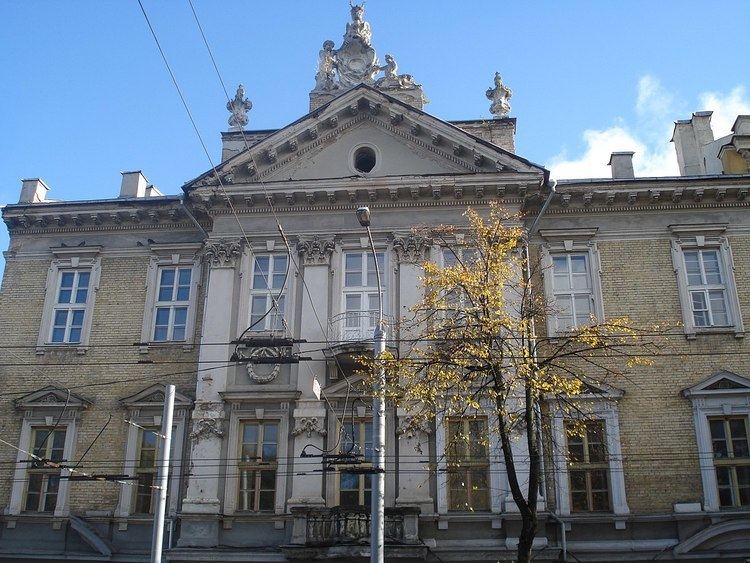Phone +370 5 231 2357 | Founded 1989 | |
 | ||
Address Naugarduko st. 10/2, Vilnius 01309, Lithuania Hours Closed now Monday10AM–6PMTuesday10AM–6PMWednesday10AM–6PMThursday10AM–6PMFriday10AM–4PMSaturdayClosedSunday10AM–4PMSuggest an edit Similar VVGŽM Tolerancijos centras, Museum of Genocide Victims, National Museum of Lithuania, Gediminas' Tower, Gate of Dawn | ||
Mr markas zingeris director of the vilna gaon jewish state museum lithuania
The Vilna Gaon Jewish State Museum (Lithuanian: Valstybinis Vilniaus Gaono Žydụ Muziejus; Yiddish: דער ווילנער גאון מלוכהשער יידישער מוזיי) in Vilnius, Lithuania is dedicated to the historical and cultural heritage of Lithuanian Jewry.
Contents
- Mr markas zingeris director of the vilna gaon jewish state museum lithuania
- Escaping lithuania with the help of chiune sugihara
- References
The museum was established in 1989 by the Lithuanian Ministry of Culture. Over the course of the following years, its exhibition items, many from earlier Jewish museums in Lithuania, were brought together. It received its current name in 1997, commemorating the 200th anniversary of the death of the Talmudic scholar Vilna Gaon.
Its five branches focus on various aspects of history and culture. The Tolerance Center's collections include works of sacred, modern, and traditional art along with historical materials; The Green House is a Holocaust exhibit; the Paneriai Memorial is dedicated to the Paneriai (Ponary) Massacre; the Jacques Lipchitz Memorial Museum in Druskininkai exhibits his lithographs; and the former Tarbut Gymnasium displays the history of Lithuanian Jews in the interwar and Nazi period.
The museum acquires and systematizes materials, issues publications, conducts research, organizes permanent and temporary exhibitions, and sponsors educational activities.
In 2010, the Museum and the Austrian Verein Gedenkdienst joined forces to launch the Lithuanian Holocaust Atlas project. Expanding on previous research on Holocaust murder sites in Lithuania, the project created an internet data base, and in 2011 published the Lithuanian Holocaust Atlas, a 318-page volume reference book of 227 mass graves with detailed information on the location, coordinates, perpetrators, victims and their number. Dr. Arūnas Bubnys served as the project's historian.
